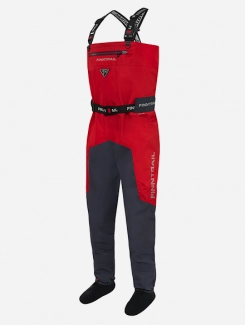ATV Helmet Care
Your helmet is the most important part of your riding gear, so you hopefully made a bit of an investment in it to be sure you got a truly safe one. The next step is to make sure you are properly caring for it. The helmet's appearance will suffer and even the safety of it be impacted if you don't clean it and store it correctly. So read this post to learn all about ATV helmet care.
ATV Helmet Care General Rules

What you'll need
Be prepared with several microfiber cloths to wipe the helmet, a soft toothbrush or cotton swabs to clean crevices, and your choice of a gentle shampoo that doesn't contain petroleum. Petroleum can damage the materials inside the helmet.
You'll also need a sink, tub, or bucket to wash the helmet in and warm water to loosen stuck particles and oils.
How often you need to clean your helmet
You need to clean your helmet after every ride, even if it looks clean. Sweat, oil, dirt, mud, dust, bugs, and debris all collect on the outside and inside of your helmet. When they're left on there for even a day, they can begin to cause problems.
Bacteria and mildew can grow, which can make the helmet both unpleasant and dangerous to wear.
Any filth left on the helmet can also degrade the materials, impacting its appearance and safety.
Do's and don'ts of ATV helmet care
Do:
- use mild cleaning products
- wipe gently to avoid scratching the helmet or damaging materials
- clean crevices and do so with a soft toothbrush or cotton swabs
- air-dry the helmet
- protect the outside with automotive or helmet wax
- lubricate any parts that move with a silicone spray
Don't:
- use any petroleum-based product on your helmet
- use ammonia-based products on the visor
- scrub
- wash liners in the washing machine (if you must, wash them in a delicates bag on the gentle cycle)
- apply heat such as in a clothes dryer or from a hair dryer to the liner
- dry the helmet in direct sunlight
- store the helmet in a bag or box (it must be in a well-ventilated space)
- store your gloves or anything else in your helmet
How to Clean the Exterior

Gently, separate the liner and other interior parts you will wash in the next step. You'll want to be careful because they can tear.
Also separate the visor, if you can, so you can more easily wash it.
Sit your helmet down with a warm, wet microfiber cloth spread over it to loosen up dirt, bugs, and oils before you wipe. Also lay a warm, wet microfiber cloth over the visor. You'll want to let them sit like this a few minutes.
Gently clean the crevices with your toothbrush or cotton swab.
Then soap up your hands with the gentle shampoo and gently rub the helmet until clean. Follow by doing the same with the visor.
Wipe any excess soapy water off with a microfiber cloth.
How to Clean the Interior
If you're following the steps in this post, then you've already seen that we suggested you separate the lining from the helmet shell. Most new helmets have removable liners and cheek pads so they can be thoroughly cleaned. Remember to always remove the interior parts gently to be sure they don't tear.
It's best to read the helmet's owner's manual to learn exactly how to remove the liner.
Soap up your hands in warm water and gently massage the liners until clean.
You can then pat them dry with a clean towel and lay them somewhere in a well-ventilated area out of direct sunlight to air dry.
With the liners out, you can wipe clean the EPS liner with a soft, damp cloth.
You'll also need to wipe the helmet straps with a damp cloth.
If your helmet doesn't have removable liners, it makes proper helmet care more difficult. You'll be forced to clean the interior with a soft, damp cloth and a gentle non-petroleum based cleaner.
Post-wash ATV Helmet Care
There are a few more steps in caring for your helmet.
When your helmet is dry, you have the best opportunity to check it for damage like chips, cracks, and scratches, or worn and damaged liners.
It isn't a requirement, but you might want to protect the outside of your helmet with an automotive or helmet wax to make it look shiny longer and to make it easier to clean because dirt and bugs and such have a harder time sticking to it.
Reassembling the helmet should be pretty straightforward because you'll do what you did before in reverse. If it isn't straightforward, you can check your owner's manual for the steps.
How to Store the Helmet Properly
Storing your helmet is a major aspect of helmet care.
Keep your ATV helmet indoors and outside of a bag or box so it can get air.
You can purchase a storage rack, hang it on the wall, or sit on a shelf.









